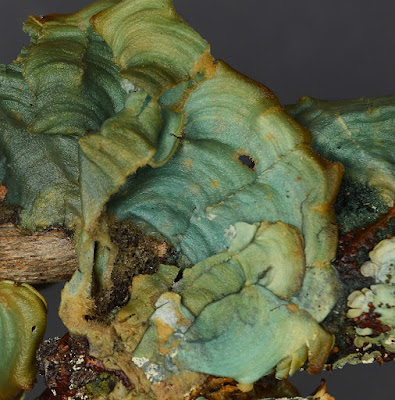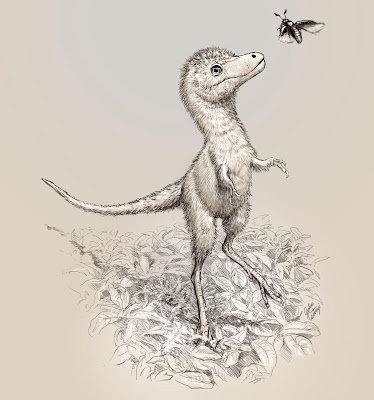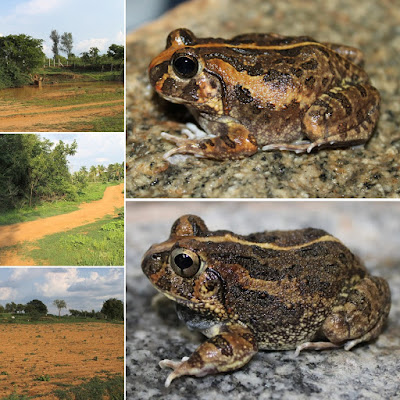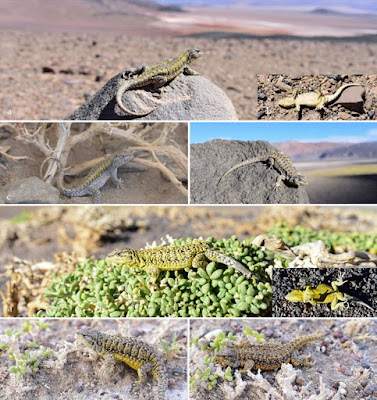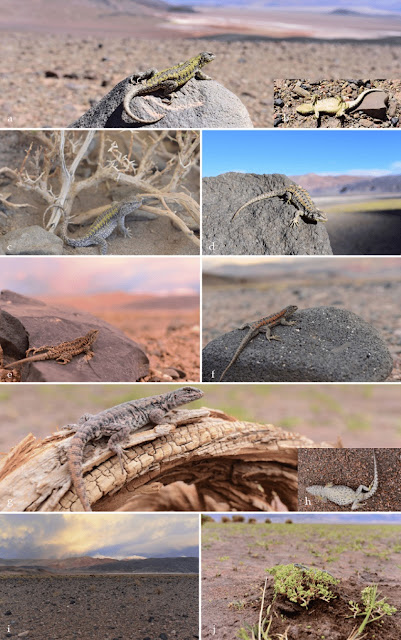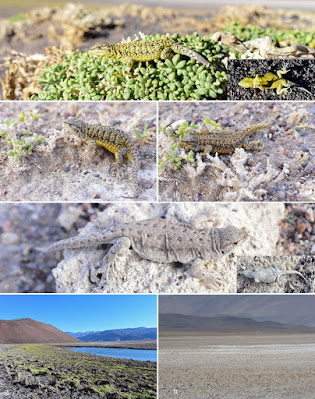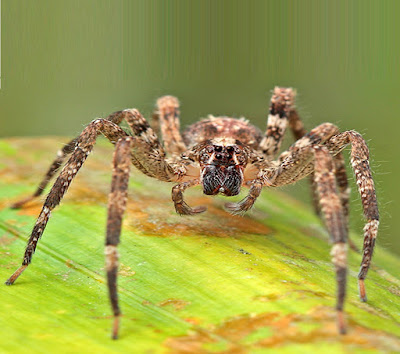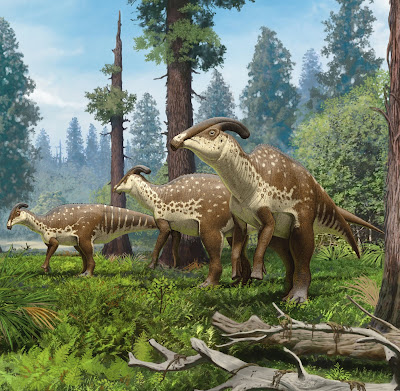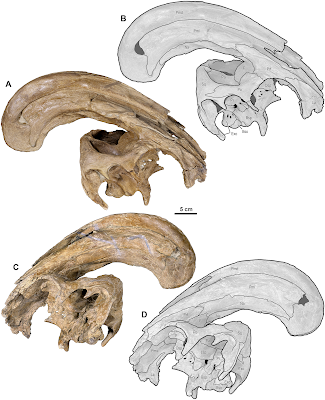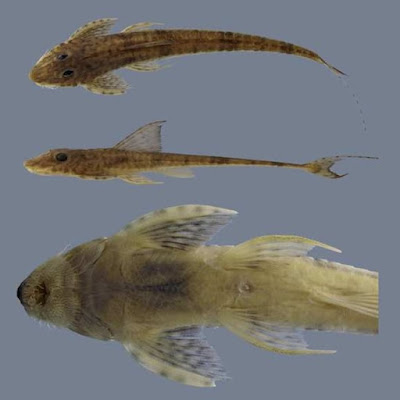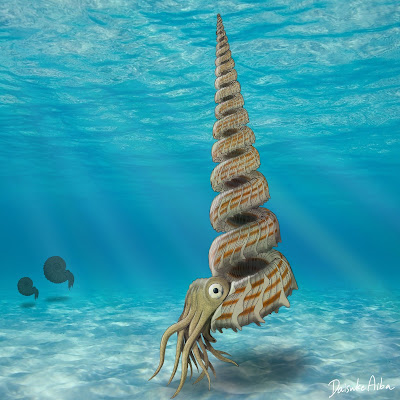[Most Recent Entries] [Calendar View]
Wednesday, January 27th, 2021
| Time | Event | ||||
| 2:00a | [Fungi • 2020] Cora timucua (Hygrophoraceae) • A New and Potentially Extinct, previously Misidentified Basidiolichen of Florida Inland Scrub Documented from Historical Collections
Abstract The known collections of the genus Cora in continental North America north of Mexico, all restricted to Florida, are shown to belong to a single species, representing a previously unrecognized taxon formally described herein as Cora timucua. Based on data of the fungal ITS barcoding marker, obtained through Sanger and Illumina sequencing from two historical collections, the new species is phylogenetically most closely related to C. casanarensis from Colombia and C. itabaiana from Brazil, although it is morphologically most similar to the only distantly related C. hymenocarpa from Costa Rica. Based on data from the Consortium of North American Lichen Herbaria (CNALH) and from the Global Biodiversity Information Facility (GBIF), most of the collections of C. timucua originate from around the turn of the 19th century, while a few were made in the second half of the 20th century, all between 1968 and 1985. Almost all collections originate from Florida sand pine scrub, apparently the preferred habitat of this taxon. Neither modern collections nor extant localities are known. Based on these findings and the substantial degree of land use change in Florida in the past decades, we assessed the conservation status of C. timucua using the IUCN Red List criteria and found that it should be classified as critically endangered (CR), in line with the status of another Florida endemic, Cladonia perforata, which was the first federally red-listed lichen in the United States. The most likely location where C. timucua may still be extant is Ocala National Forest in the north-central portion of the Florida peninsula, although recent macrolichen surveys in that area did not encounter this species. Robert Lücking, Laurel Kaminsky, Gary B. Perlmutter, James D. Lawrey and Manuela Dal Forno. 2020. Cora timucua (Hygrophoraceae), A New and Potentially Extinct, previously Misidentified Basidiolichen of Florida Inland Scrub Documented from Historical Collections. The Bryologist 123(4); 657-673. DOI: 10.1639/0007-2745-123.4.657 Rare lichen unique to Florida discovered in museum collections, may be extinct | ||||
| 2:02a | [Paleontology • 2021] Baby Tyrannosaurid Bones and Teeth from the Late Cretaceous of western North America
Abstract Tyrannosaurids were the apex predators of Late Cretaceous Laurasia and their status as dominant carnivores has garnered considerable interest since their discovery, both in the popular and scientific realms. As a result, they are well studied and much is known of their anatomy, diversity, growth, and evolution. In contrast, little is known of the earliest stages of tyrannosaurid development. Tyrannosaurid eggs and embryos remain elusive, and juvenile specimens — although known — are rare. Perinatal tyrannosaurid bones and teeth from the Campanian–Maastrichtian of western North America provide the first window into this critical period of the life of a tyrannosaurid. An embryonic dentary (cf. Daspletosaurus) from the Two Medicine Formation of Montana, measuring just 3 cm long, already exhibits distinctive tyrannosaurine characters like a “chin” and a deep Meckelian groove, and reveals the earliest stages of tooth development. When considered together with a remarkably large embryonic ungual from the Horseshoe Canyon Formation of Alberta, minimum hatchling size of tyrannosaurids can be roughly estimated. A perinatal premaxillary tooth from the Horseshoe Canyon Formation likely pertains to Albertosaurus sarcophagus and it shows small denticles on the carinae. This tooth shows that the hallmark characters that distinguish tyrannosaurids from other theropods were present early in life and raises questions about the ontogenetic variability of serrations in premaxillary teeth. Sedimentary and taphonomic similarities in the sites that produced the embryonic bones provide clues to the nesting habits of tyrannosaurids and may help to refine the prospecting search image in the continued quest to discover baby tyrannosaurids.
Stephen L. Brusatte, John B. Scannella, John R. Horner and Philip J. Currie. 2021. Baby Tyrannosaurid Bones and Teeth from the Late Cretaceous of western North America. Canadian Journal of Earth Sciences. DOI: 10.1139/cjes-2020-0169 Résumé: Les tyrannosauridés étaient les prédateurs apicaux de la Laurasie au Crétacé tardif, et leur statut de carnivores dominants a suscité un intérêt considérable depuis leur découverte, tant au sein du grand public que dans les milieux scientifiques. Ils sont par conséquent bien étudiés, et les connaissances sur leur anatomie, leur diversité, leur croissance et leur évolution sont vastes. En revanche, on en sait peu sur les premières étapes de leur développement. Les œufs et embryons de tyrannosauridés manquent toujours à l’appel et, bien que certains soient connus, les spécimens juvéniles sont rares. Des os et dents de tyrannosauridés périnataux du Campanien–Maastrichtien de l’ouest de l’Amérique du Nord constituent la première fenêtre sur cette période clé de la vie d’un tyrannosauridé. Un os dentaire embryonnaire (cf. Daspletosaurus) de la Formation de Two Medicine, au Montana, faisant seulement 3 cm de long, présente déjà des caractères distinctifs des tyrannosaurinés, comme un « menton » et un profond sillon de Meckel, et révèle les toutes premières étapes du développement des dents. Ces observations, combinées à une phalange unguéale embryonnaire remarquablement longue de la Formation de Horseshoe Canyon en Alberta, permettent d’estimer grossièrement la taille minimum de tyrannosauridés nouvellement éclos. Une dent prémaxillaire périnatale de la Formation de Horseshoe Canyon appartient probablement à Albertosaurus sarcophagus et présente de petits denticules sur les carènes. Cette dent démontre que les caractères typiques qui distinguent les tyrannosauridés d’autres théropodes étaient présents tôt durant la vie et soulève des questions concernant la variabilité ontogénétique de dentelures sur les dents prémaxillaires. Des similitudes sédimentaires et taphonomiques dans les sites qui ont produit des ossements d’embryons fournissent des indices sur les habitudes de nidification des tyrannosauridés et pourraient aider à préciser l’image recherchée pour la prospection dans la quête continue de bébés de tyrannosauridé. [Traduit par la Rédaction] | ||||
| 2:11a | [Herpetology • 2020] Sphaerotheca bengaluru • A New Species of Sphaerotheca Günther, 1859 (Anura: Dicroglossidae) from the degraded Urban Ecosystems of Bengaluru, Deccan Plateau, India
Abstract The dicroglossid genus Sphaerotheca was erected by Günther in 1859, with its range of distribution in South Asia. Since then, 13 species have been described and 10 species are considered valid. Many of these descriptions were from low to mid-elevation ranges of homestead areas, agroecosystems and degraded landscapes with a few from forested areas. In the present account, a new species of Sphaerotheca, a genetically distinct lineage with a morphological character set distinguishable from its congeners, is described from the surroundings of Bengaluru city, India. Based on evidence for the origin of the original specimen, we also designated a neotype for Rana variegata Gravenhorst, 1829, a junior primary homonym of Rana variegata Linnaeus, 1758, and permanently invalid name, so that it is now a subjective synonym of Rana (Tomopterna) breviceps rolandae Dubois, 1983. Keywords: Amphibia, Bengaluru, Deccan Plateau, Sphaerotheca, urban ecosystem Sphaerotheca bengaluru Etymology. The specific epithet is derived from the name ‘Bengaluru’, the type locality for the species and the species epithet is treated as a noun in apposition to the generic name. Suggested common name: “Bengaluru burrowing frog”.
P. Deepak, K. P. Dinesh, Annemarie Ohler, Kartik Shanker, B. H. Channakeshavamurthy and J. S. Ashadevi. 2020. A New Species of Sphaerotheca Günther, 1859 (Anura: Dicroglossidae) from the degraded Urban Ecosystems of Bengaluru, Deccan Plateau, India. Zootaxa. 4885(3); 423–436. DOI: 10.11646/zootaxa.4885.3.6 | ||||
| 2:18a | [Herpetology • 2021] Liolaemus kunza & L. salitrosus • Increasing Knowledge of the Denizens of Saline Environments through Integrative Taxonomy: New Argentinian Endemic Taxa of Liolaemus (Iguania: Liolaemidae) and their Evolutionary Relationships
Abstract The known diversity of the genus Liolaemus continues to increase, principally due to its great degree of endemism, the increasing number of researchers working on it, and advances in the taxonomic and phylogenetic knowledge of the genus. This diversity positions Liolaemus as the second most species-rich tetrapod genus. The present work adds to evidence for the great diversity of Liolaemus through the description of two new species, endemic to saline environments in the Argentinian Puna. Both species are members of the Liolaemus montanus group within the subgenus Eulaemus. To determine the taxonomic status of these lizards, we used integrative taxonomy as a tool, incorporating phylogenetic, morphological, and molecular genetic evidence, as well as the anatomy of hemipenes, statistical morphological analysis, and ecological characteristics. Our analyses supported the conclusion that both sampled populations of lizards are species new to science. One of these is found along the margins of the Antofalla salt flats in the Catamarca Province and the Hombre Muerto salt flats in the Salta Province. The other new species inhabits saline habitats vegetated by Lycium humile, principally between the salt crusts of the Antofalla salt flats. Both species are small to medium sized and can be distinguished from all other species of the L. montanus group by unique combinations of morphological characters, primarily pholidosis and dorsal and ventral colour patterns. Key words: Argentine, ecology, hemipenis, lizard, morphology, phylogeny, principal components analysis, puna, taxonomy, total evidence Liolaemus kunza Abdala, Semhan & Paz sp. nov. Etymology. We dedicate the scientific name of this species to the extinct Kunza language, which was spoken until the XIX century by peoples of the Altiplano of Argentina, Plurinational State of Bolivia, and Chile. Liolaemus salitrosus Abdala & Paz sp. nov. Etymology: The specific epithet salitrosus refers to the peculiar habitat of this species, closely associated with the salt flat, an extreme environment characterized by a hypersaline soil covered with thick saltpetre crusts. Cristian S. Abdala, Marcos M. Paz, Romina V. Semhan, Noelia García, Alvaro J. Aguilar-Kirigin, María E. Farías, Pablo Valladares, Roberto Gutiérrez Poblete, Matías A. Quipildor, Julián Valdes and Robert Langstroth. 2021. Increasing Knowledge of the Denizens of Saline Environments through Integrative Taxonomy: New Argentinian Endemic Taxa of Liolaemus (Iguania: Liolaemidae) and their Evolutionary Relationships. Systematics and Biodiversity. 19(2); 135-167. 10.1080/14772000.2020.1844818 | ||||
| 3:07a | [Arachnida • 2021] Revision of the Neotropical Spider Genus Acanthoctenus (Araneae: Ctenidae: Acanthocteninae)
Abstract We revise the genus Acanthoctenus Keyserling, 1877 recognizing thirteen valid species, of which five are new species and two are re-validated. Further, we find one new synonymy and transfer one species. We describe Acanthoctenus alux sp. nov. from Guatemala, A. chickeringi sp. nov. and A. lamarrei sp. nov. from Panama, A. manauara sp. nov. from Brazil and A. torotoro sp. nov. from Bolivia. We revalidate Acanthoctenus dumicola Simon, 1906 stat. res. from Venezuela, and A. virginea (Kraus, 1955) stat. res., comb. nov. from El Salvador. We transfer Acanthoctenus mammifer to Viracucha mammifer (Mello-Leitão, 1939) comb. nov., from Brazil. Acanthoctenus maculatus Petrunkevitch, 1925 and Gephyroctenus kolosvaryi Caporiacco, 1947 are considered species inquirendae in Acanthocteninae and Ctenidae, respectively, and A. obauratus Simon, 1906 and A. rubrotaeniatus Mello-Leitão, 1947 are considered incertae sedis in Acanthocteninae and Acantheinae, respectively. We also describe for the first time the female of Acanthoctenus spiniger Keyserling, 1877, the type species of the genus. We provide illustrations of male and female diagnostic characters, genitalia, habitus, and measurements to support the genus re-description and further identification of its species. We yield a distributional map of the specimens recorded and the description of the natural history of Acanthoctenus manauara sp. nov. Keywords: Araneae, Central America, cribellate spiders, Lycosoidea, morphology, new species, South America, taxonomy Stephany Arizala, Facundo Martín Labarque and Daniele Polotow. 2021. Revision of the Neotropical Spider Genus Acanthoctenus (Araneae: Ctenidae: Acanthocteninae). Zootaxa. 4920(1); 1–55. DOI: 10.11646/zootaxa.4920.1.1 | ||||
| 4:31a | [Paleontology • 2021] Parasaurolophus cyrtocristatus • Description and Rediagnosis of the Crested Hadrosaurid (Ornithopoda) Dinosaur on the Basis of New Cranial Remains
Abstract For nearly 60 years, skulls of Parasaurolophus species have been differentiated primarily on the basis of crest shape rather than on unique morphologic characters of other cranial elements. Complicating matters is the fact that crests dramatically change shape throughout ontogeny. Without a complete growth series, it has become difficult to assess the taxonomic distinctness of each species through the lens of allometric growth. Parasaurolophus cyrtocristatus has proven to be especially troublesome to assess because of the poorly preserved nature of the type and only skull. A new, partial skull from the Fossil Forest Member of the Fruitland Formation—the same geologic unit as the type specimen—is the first opportunity to re-diagnose this species as well as redefine the genus with many new traits. An undescribed, short-crested subadult skull from the Kaiparowits Formation of Utah previously assigned to cf. P. cyrtocristatus allows detailed comparisons to be made between the unnamed Utah taxon and the material of this species from the type locality. We find that several characteristics of the squamosal, supraoccipital, and premaxilla shared between the referred skull and the type skull are unique to P. cyrtocristatus (senso stricto) within the genus, irrespective of the overall crest shape. A phylogenetic analysis that includes six new characters posits that P. cyrtocristatus and P. tubicen are sister taxa, and that the latter does not share a closest common ancestor with the long-crested P. walkeri as previously hypothesized. This result helps to explain why both taxa are found in northeastern New Mexico, USA and in sequential geologic units (Fruitland Formation and Kirtland Formation, respectively). Additionally, the exquisitely preserved new skull provides the first opportunity to unequivocally identify the osteological make-up of the Parasaurolophus cranial crest. Unlike in previous reconstructions, the crest composition in Parasaurolophus follows what is seen in other lambeosaurines such as Corythosaurus, where the dorsal process of the premaxilla dominates the crest, with the nasal forming 80% of the ventral paired tubes, and the lateral premaxillary process acting a lateral cover between the dorsal and ventral tubes. The skull of P. cyrtocristatus is still incompletely known, so more complete material will likely reveal new features that further differentiate this species and aid in determining the pace of ornamental crest evolution.
Systematic paleontology Dinosauria Owen, 1842 Ornithischia Seeley, 1888 Ornithopoda Marsh, 1881 Iguanodontia Baur, 1891 sensu Sereno, 1986 Hadrosauridae Cope, 1870 sensu Prieto-Márquez, 2010 Lambeosaurinae Parks, 1923 Parasaurolophini Brett-Surman, 1989 Parasaurolophus Parks, 1922 Parasaurolophus cyrtocristatus (Ostrom, 1961) Holotype: FMNH P-27393: Partial skull composed of nearly complete right premaxilla, posterior portion of left premaxilla, mostly complete right nasal, skull roof, partial braincase, and mostly complete postcranial skeleton. Terry A. Gates, David C. Evans and Joseph J.W. Sertich. 2021. Description and Rediagnosis of the Crested Hadrosaurid (Ornithopoda) Dinosaur Parasaurolophus cyrtocristatus on the Basis of New Cranial Remains. PeerJ. 9:e10669. DOI: 10.7717/peerj.10669 | ||||
| 4:53a | [Ichthyology • 2021] Loricaria cuffyi • A New Species of Loricariin Catfish (Siluriformes: Loricariidae) from the Guiana Shield
Abstract Loricaria cuffyi n. sp. is described based on 36 specimens from the Essequibo and upper Negro River drainages in western Guyana and the upper Orinoco River drainage in Venezuela. The new species can be distinguished from sympatric and geographically proximate congeners by a postorbital notch that is inconspicuous, shallow and rounded, odontode ridges on the dorsum of head and predorsal weakly developed, abdominal plates tightly joined and completely covering the median abdominal space and pectoral girdle, higher anterior lateral plate counts, and coloration characteristics. The distribution of the new species adds to an interesting and well‐documented biogeographical pattern exhibited by other Guiana Shield loricariids influenced by the proto‐Berbice during the Cenozoic and recent configuration of drainages in the Guiana Shield. We present an update on the taxonomy of Loricaria, and discuss the biogeography and conservation status of the new species. Keywords: Amazon basin, Essequibo, Loricaria cataphracta, Takutu, taxonomy, Ventuari
Loricaria cuffyi new species Etymology: In honour of the Afro‐Guyanese slave Cuffy, or Coffy, who in 1763 led the revolt of more than 2500 slaves in Berbice (former region of Guyana, now Co‐operative Republic of Guyana) against the Dutch settler regime, which finally led to their freedom. Cuffy, accepted by all the rebels as the leader of the rebellion, declared himself Governor of Berbice. Today he is considered Guyana's first national hero (Ishmael, 2013). Alejandro Londoño‐Burbano, Alexander Urbano‐Bonilla and Matthew R. Thomas. 2021. Loricaria cuffyi (Siluriformes: Loricariidae), A New Species of Loricariin Catfish from the Guiana Shield. Journal of Fish Biology. 98(1); 154-167. DOI: 10.1111/jfb.14566 | ||||
| 10:19a | [Paleontology • 2021] Yezoceras elegans • A New Species of Yezoceras (Ammonoidea, Nostoceratidae) from the Coniacian in the Northwestern Pacific Realm
Abstract A nostoceratid ammonoid Yezoceras elegans sp. nov. is newly described from the Coniacian of the Haboro area in Hokkaido, northern Japan. Yezoceras elegans sp. nov. having loosely coiled whorls, a wide umbilicus, and two prominent tubercle rows concentrated in the lower part of the whorls, is distinguished from the other species by these characteristics. Yezoceras elegans sp. nov. might have originated from Y. nodosum, judging from the stratigraphic correlation. The restricted occurrences of three Yezoceras species (Y. elegans sp. nov., Y. nodosum and Y. miotuberculatum) in Hokkaido, northern Japan suggest that the speciation of Yezoceras occurred in the northwestern Pacific realm during the Coniacian age. Daisuke Aiba, Tomoki Karasawa and Tetsuro Iwasaki. 2021. A New Species of Yezoceras (Ammonoidea, Nostoceratidae) from the Coniacian in the Northwestern Pacific Realm. Paleontological Research. 25(1); 1-10. DOI: 10.2517/2020PR008 北海道羽幌町より新種の異常巻きアンモナイトを発見 [プレスリリース] |
| << Previous Day |
2021/01/27 [Calendar] |
Next Day >> |
